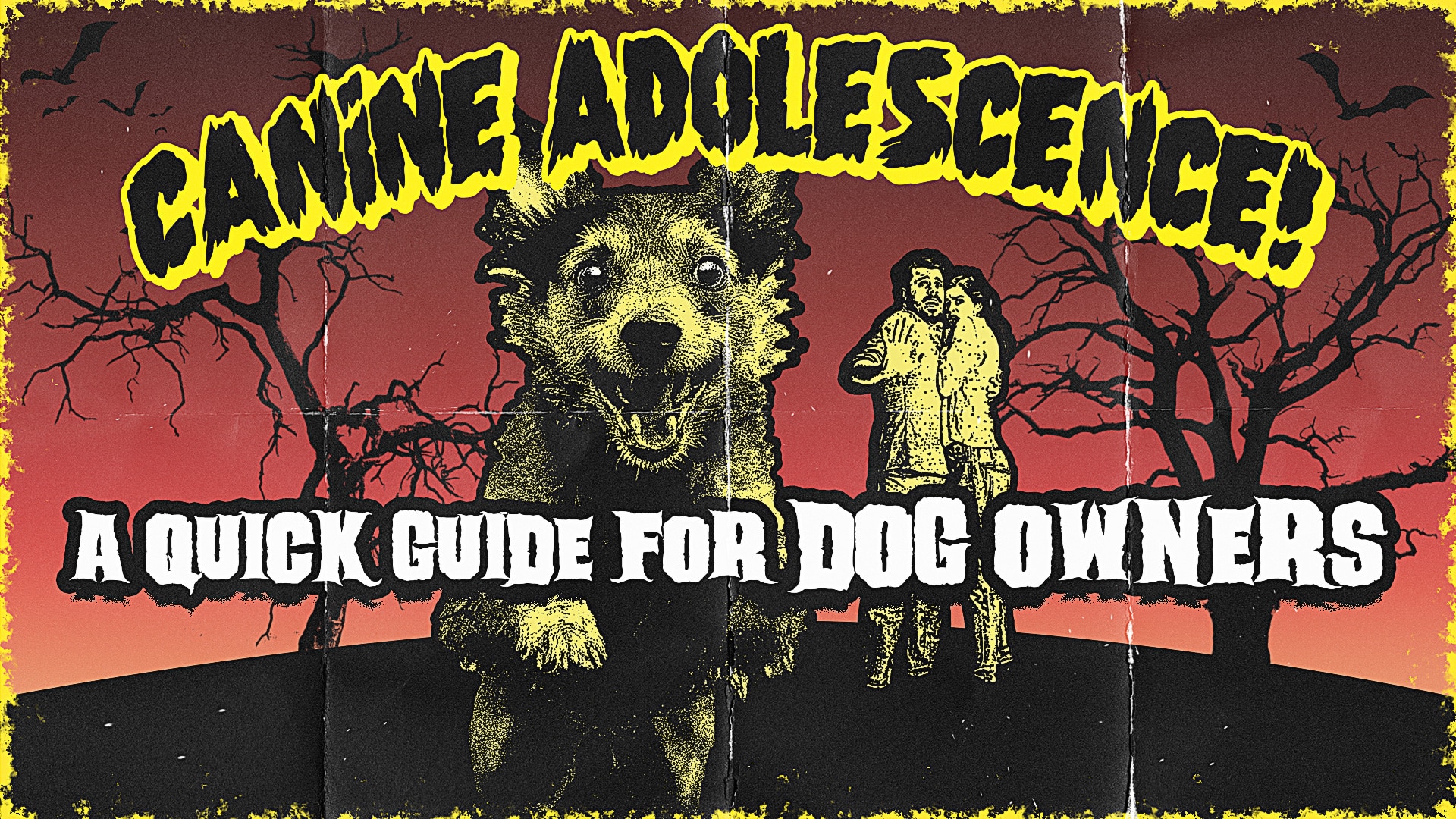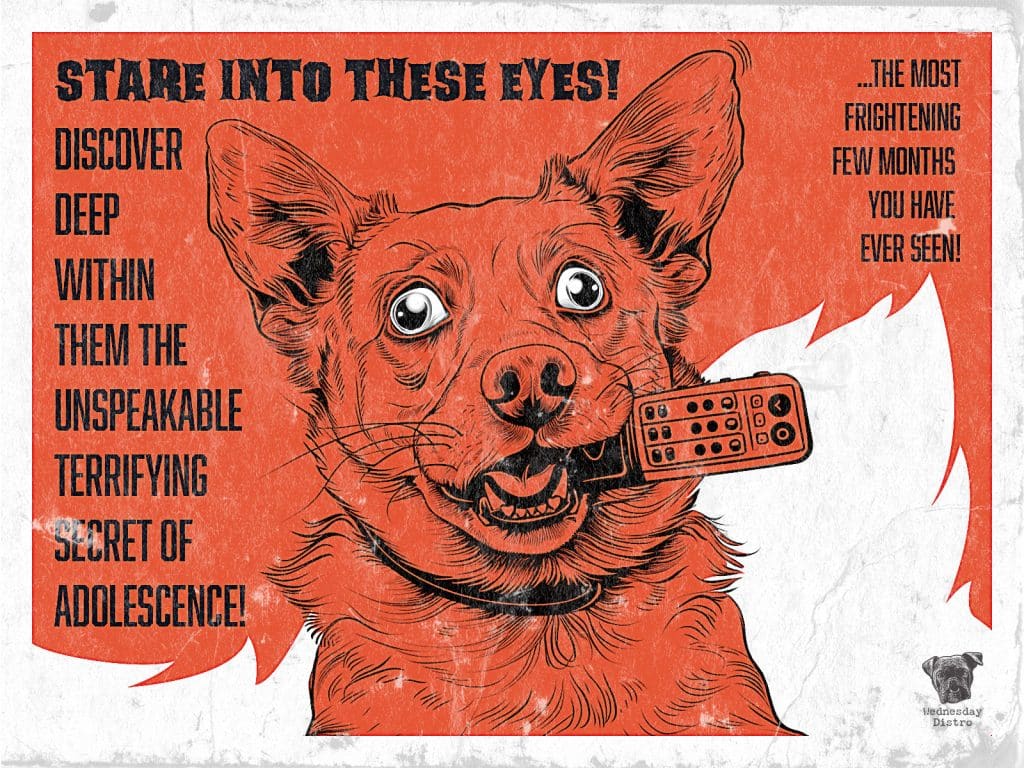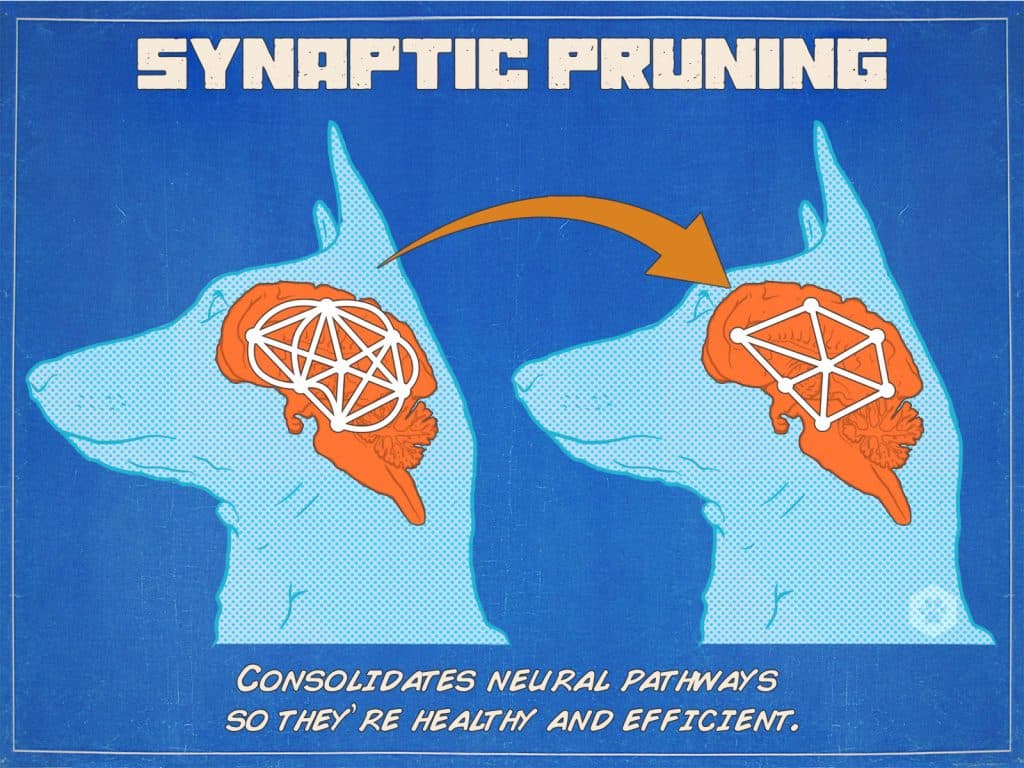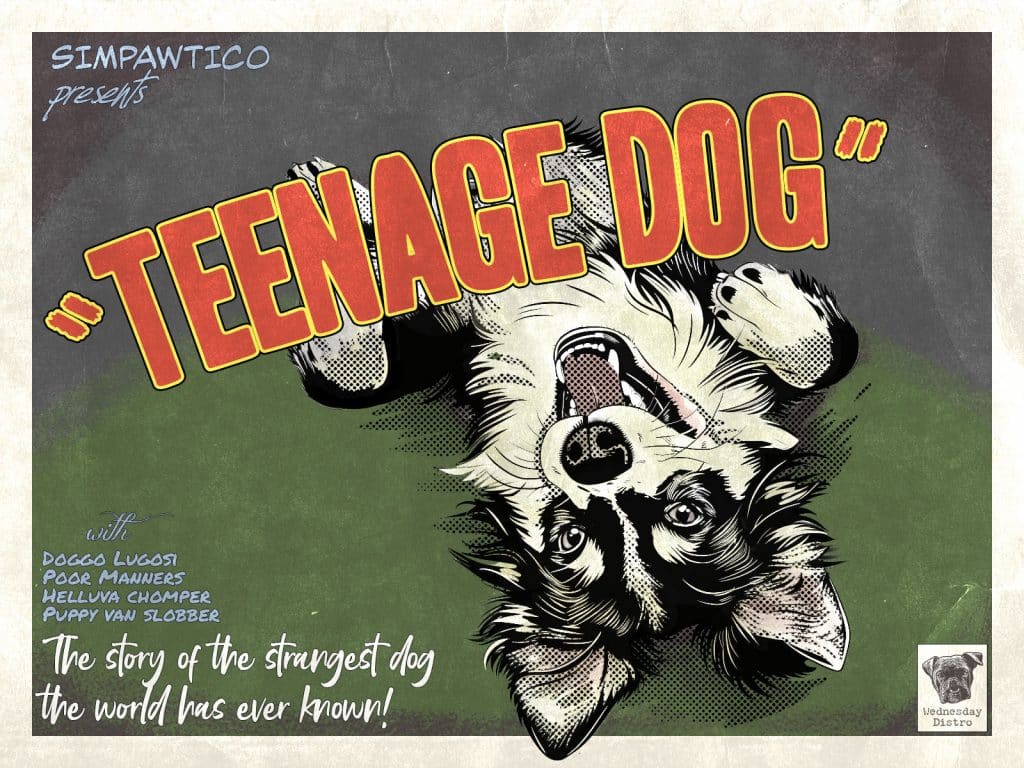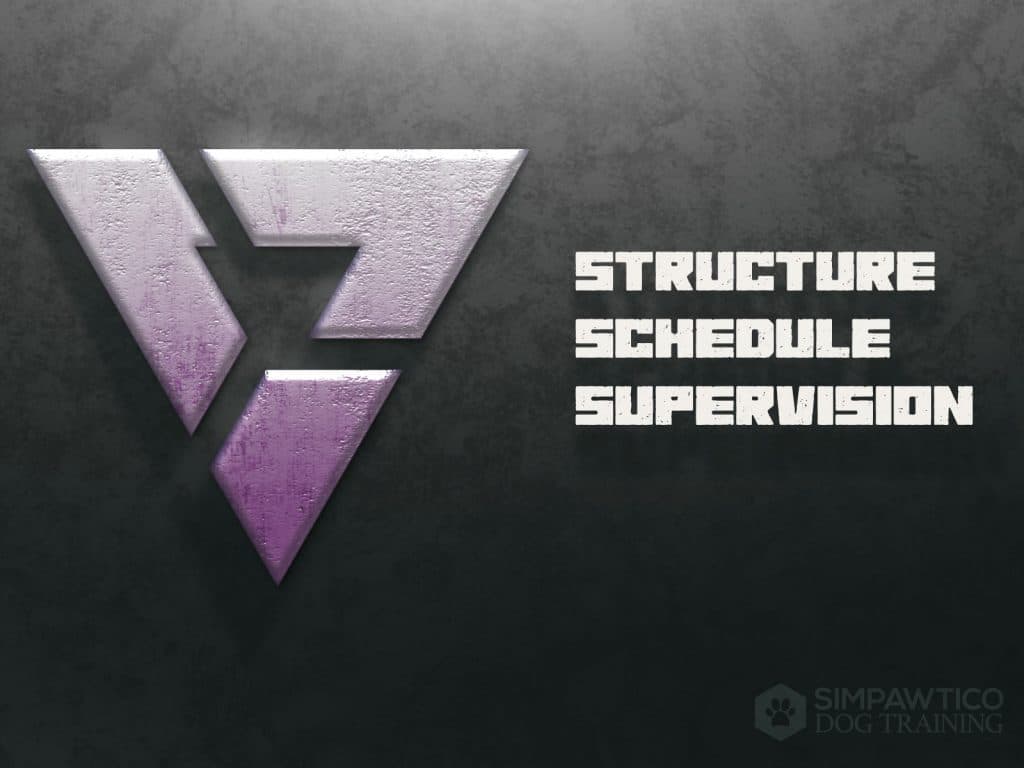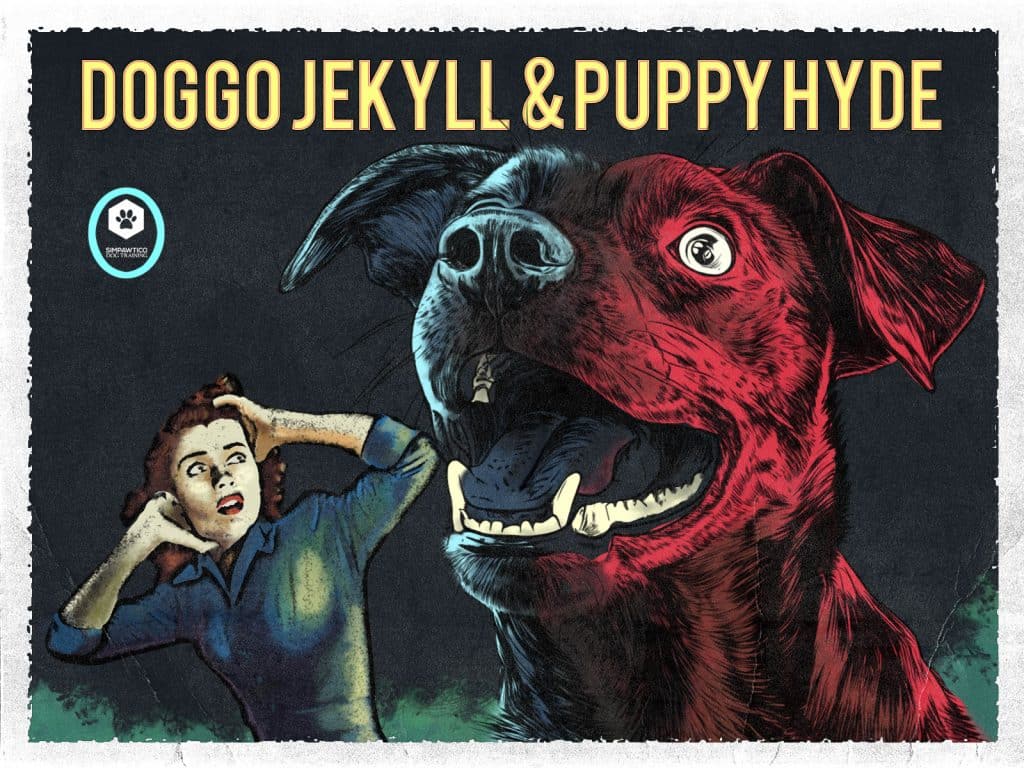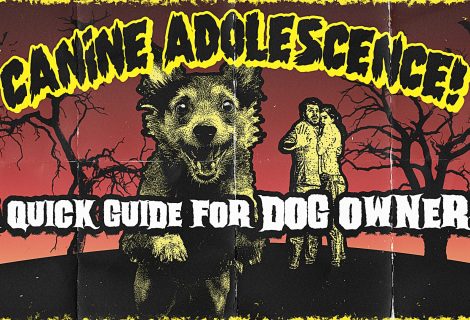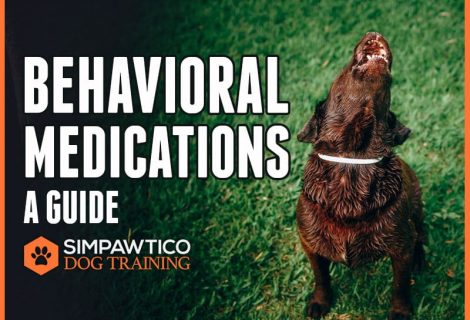WELCOME TO THE TEENAGE YEARS!
Welcome to the exciting (and sometimes terrifying) journey of puppy adolescence! Young dogs go through a transformative phase between 6 months and 2 years, and, just like human teens, this time is filled with tremendous physical, hormonal, and behavioral changes. Understanding this period is not just helpful—it’s empowering! Let’s explore how you can support your pup and deepen the bond you share during this crucial time.
TIMELINE OF DOG ADOLESCENCE
Adolescence is a time that spans roughly a year to two years, depending on your dog’s breed. Generally, the adolescent period encompasses three phases.
- Early adolescence (6-12 Months): Your puppy may start testing boundaries. Basic commands might need reinforcement.
- Middle adolescence (12-18 Months): Growth spurts continue, and your puppy might show signs of sexual maturity. Consistency in training and socialization is critical.
- Late adolescence (18-24 Months): Most dogs start settling into their adult personalities. Training should focus on refining skills and locking down good manners.
PHYSICAL, HORMONAL, & NEURAL TRANSFORMATIONS
A teenage puppy undergoes numerous changes, from their brain to the tip of their tail. With so much happening beneath the surface, understanding these rapid shifts can significantly enhance your ability to support your dog (and keep your sanity).
Growth Spurts:
Your teen dog will experience rapid growth, leading to increased appetite and bursts of energy. Larger breeds tend to mature slower, often remaining in adolescence longer than smaller breeds.
Hormonal Surges:
Like human teenagers, young dogs experience significant hormonal changes that can notably affect their behavior. This developmental stage often coincides with the onset of sexual maturity.
During this time, dogs may begin to exhibit behaviors such as marking territory, which is how they establish their presence and communicate with other dogs. Additionally, some young dogs may engage in mounting behaviors, a common action that can be linked to assertiveness or playfulness rather than sexual motivation. Furthermore, this period can lead to increased levels of aggressive, reactive, or anxious behaviors in specific individuals as they navigate the challenges of adolescence and social interactions.
This doesn’t make them bad dogs! Understanding these changes is crucial for owners to provide appropriate training and support.
Neural Changes:
Adolescence is also a critical time for brain development in dogs, just like it is for humans. During this period, something fascinating happens called “synaptic pruning.”
Like all mammals, when your dog is very young, the brain forges new neural connections at a staggering rate. The brain is constantly learning, and every new thing or context gets connected to anything else even remotely relevant. While this is great for early learning, the neural connections have grown into an overly complicated web by the time puberty starts to set in. So, synaptic pruning is where your dog’s brain gets rid of unused neural connections—kind of like a gardener trimming away extra branches to help the plant grow better. This pruning is super important because it allows the remaining connections to work more efficiently.
However, this stage can also bring some temporary behavior changes. They might act unpredictably, seemingly forget things you already taught them, have non-existent impulse control, and overthink social interactions…it’s as tough for them as it is for you! As they adjust to new experiences and challenges, it’s critical to give them patience, guidance, and positive reinforcement to help them through this important phase.
Learning and Forgetting:
You might notice your dog “forgetting” commands they once knew, which can be disheartening but is a normal part of synaptic pruning. It’s important to be patient and consistent with training during this time. Regular practice not only helps reinforce existing commands but also strengthens your bond with your teenage dog. Be prepared to re-teach commands as necessary.
Behavioral Changes:
Adolescent dogs can exhibit increased independence and decreased self-control as they explore their environment more freely. During this stage, they often test boundaries, a natural part of their development as they learn about their place in the world. This phase may also include seemingly random bouts of stubbornness, where they may refuse commands or ignore their owners. Understanding that these behaviors are developmentally appropriate can help you navigate this challenging time!
YOU CAN DO IT!
You’ve got this! Let’s discuss some of the challenges you might be facing. And be sure to stick around until the end, where I’ll share some practical training tips for you as well!
Owner Frustration:
It’s extremely common for owners to feel frustrated during this phase. However, it’s important to remember that this is a temporary stage in your dog’s development. We were all teenagers once (and probably drove our parents crazy, too!). So, stay patient and remember, this too shall pass.
Routine and Structure:
Maintaining a consistent routine and established procedures is crucial for effective management. Regular meal times ensure that your pet’s dietary needs are met, while scheduled walks provide essential exercise and an opportunity for exploration. Play sessions are equally important, as they provide mental stimulation and strengthen your bond. This structured approach creates a sense of stability for your pet, helping them feel secure in their environment. Ultimately, it’s all about creating a balanced schedule that includes structure, schedule, and supervision, allowing you to enjoy quality time together while ensuring their well-being.
Positive Reinforcement Training:
Reward-based training is paramount. Utilize rewards, praise, and affection to reinforce positive behavior. Avoid punishment, which can lead to fear, aggression, and reactivity during this critical developmental phase. Remember to keep your emotions in check and avoid taking things personally!
Mental and Physical Exercise:
Keep your dog mentally and physically stimulated by addressing both their emotional and cognitive needs, not just the physical. Many owners prioritize exercise but overlook other essential aspects of their dog’s well-being.
At Simpawtico, we encourage you to think about the whole kit-and-caboodle with the acronym P.E.M.-SAT—Physical, Emotional, and Mental Satisfaction. Incorporate puzzle toys, attend obedience classes, and engage in interactive games. Customize these activities to suit your dog’s breed and unique preferences. For instance, herding dogs may thrive on different tasks than scent hounds, while terriers might seek engagement different from guardian breeds.
Socialization:
Dogs can “de-socialize” with isolation, so it’s important to continue to expose your dog to different environments, people, and other dogs. This helps them become well-rounded adults and can greatly enhance the quality of your dog’s life. Always supervise interactions and ensure they are positive for all parties involved.
Like when your dog was a little puppy, “socialization” doesn’t always have to be direct contact. Protected Socialization—where your dog can observe novel stimuli from a distance—is still powerful. Make sure to take your dog off your property and let them see, notice, explore, and experiment. Incorporate some practical training while doing this to keep building your dog’s skills. Also, provide ongoing feedback for the behaviors you want to reinforce.
TOP TIPS FOR TRAINING ADOLESCENT DOGS
#1 Be Patient:
Your dog is learning to navigate new experiences. Patience and understanding go a long way. If your dog struggles with a particular skill or behavior, go back to the basics and break it down into smaller steps. Rewarding small successes can help build confidence and motivation.
Likewise, remember that synaptic pruning? If you don’t keep reminding the brain what things are worth keeping, they’ll get pruned. So, be prepared to revisit and reteach all the things you probably thought were a done deal. Your dog’s behavior will likely backslide a little until the prefrontal cortex is fully developed. Be prepared for this, make peace with it, and work through it!
#2 Be Consistent with Training Expectations and Methods:
Stay the course and be consistent in your approach. Maintaining uniform communication and setting clear expectations for your young dog is crucial. Avoid the temptation to jump around and try new methods just because your dog seems stubborn or resistant. Remember, dogs thrive on routine and clarity, which helps them understand what you expect from them.
Most importantly, commit to doing the reps! Many people fall short of their training goals simply because they haven’t put in the necessary amount of practice. Consistency is critical, especially with teenage dogs, who require a lot of repetitions to solidify their learning and develop good habits. Stay patient, and keep practicing!
#3 Short Sessions:
Keep training sessions short and engaging. Adolescent dogs tend to have short attention spans and flit like a butterfly from thing to thing. Several short sessions are better than fewer longer ones. Focus on solidifying and maintaining your basics and keeping them sharp while you also polish up those social skills.
#4 Seek Professional Help:
If you’re struggling, consider enlisting a certified professional trainer. They can provide personalized guidance and support tailored to your dog’s breed, temperament, and lifestyle. Plus, they can help you troubleshoot any roadblocks and make training even more fun for both you and your dog.
#5 Be Patient With Yourself, Too:
Some days life is going to wear you down and you just ain’t gonna have time for your teenage dog’s crap! Remember to take time for yourself and fulfill your own P.E.M.-SAT!
That said, it’s important to keep your eye on your end goals, whether that’s training your dog to follow commands, improving their behavior, or achieving specific milestones in their development. Remember to celebrate every tiny step of progress along the way, as these small victories contribute to your overall success. Don’t take any good behaviors for granted; each positive change is a sign of growth.
Consider keeping a journal or log of your dog’s accomplishments and improvements. This can be a great way to track their journey and document the techniques that have worked well for you. On days when you feel discouraged, refer back to this log to remind yourself of how far you’ve come and the strides you’ve made together. Every effort counts, and your commitment will pay off!
Teaching an adolescent dog can be challenging and frustrating at times. Be patient with yourself and know that taking breaks or seeking help is okay if needed. With consistency, positivity, and forbearance, you and your dog will get through this stage successfully.
YOU’RE NOT ALONE!
Remember that every dog owner experiences this challenging stage of puppy development. It’s perfectly normal to feel overwhelmed at times. Seeking support from fellow dog owners or professional trainers can be incredibly beneficial for keeping your sanity intact. Engaging with a community of dog lovers allows you to share experiences, gain insights, and find encouragement.
You can successfully guide your puppy through this crucial developmental period by staying calm and consistent, maintaining a structured routine, and utilizing modern training techniques. These approaches build trust between you and your puppy and help them become a well-behaved, happy adult dog.
Implementing effective training strategies ensures your adolescent puppy grows into a wonderful, well-behaved adult dog. Raising a dog is filled with challenges and rewards, so hang in there and enjoy every moment of this incredible experience! Embrace the process and create a lifelong bond with your canine companion.
GOOD LUCK WITH YOUR TEENAGE PUPPY
Canine adolescence can be a challenging and frustrating time, but it’s also an opportunity to strengthen your relationship with your dog. With the right strategies—patience, consistency, and good training—you can help your dog navigate this phase and emerge as a well-adjusted, happy adult. Remember, every dog is unique and with support, you’ll both thrive (and survive!) through the teenage phase.
GET THE ZINE!
A condensed version of this article is available as a printable zine from Wednesday Distro! Please feel free to print and distribute to anyone who may benefit from this!
SOME FURTHER RESOURCES:
- Article (and links to more) from The Whole Dog Journal
- Article from the RSPCA
- Article from the American Kennel Club


